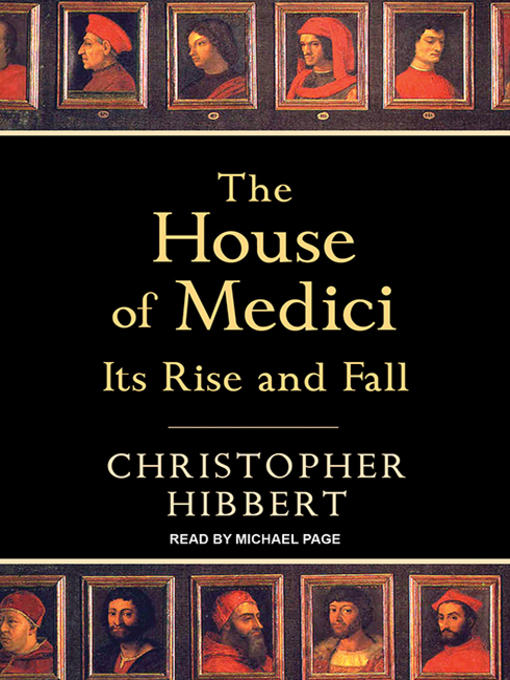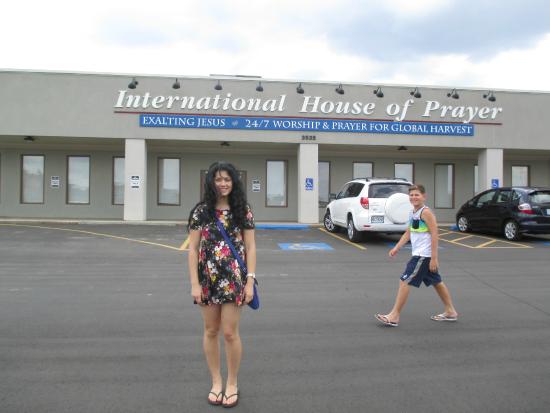Table Of Content

The failure of the plot served to strengthen the position of Lorenzo and his family’s rule over Florence. Giuliano was stabbed 19 times, and bled to death on the Cathedral floor. The city became the cultural centre of Europe and the cradle of the new humanism.
of the Most Important People in the Renaissance
The so-called younger branch of the family began with Giovanni’s younger son Lorenzo de’ Medici. His son Giovanni married Caterina Sforza of the powerful Sforza family, and their son Giovanni de’ Medici became a noted general. His son Cosimo I became duke of Florence, and Cosimo’s son Francesco de’ Medici (1541–87) was the father of Marie de Médicis. Cosimo I’s grandson Cosimo II (1590–1621) gave up the family practice of banking and commerce. Cosimo II’s grandson Cosimo III (1642–1723) was a weak ruler, under whom Tuscany’s power declined.
What is the Medici family best known for?
It became the residence of the ruling family, until 1737 when the last Medici died. It was also a treasure house where the members of the Medici family accumulated art and precious artefacts throughout the centuries. Today it hosts several museums that show the Medici’s collections, including their costumes and a vast Palatine Gallery with paintings. The perfect place to immerse oneself in the history of this great family. The family is well recognized for having been the patrons of the famous Galileo Galilei, who tutored multiple generations of Medici children.
Dustin Hoffman, 'Game of Thrones' vet set for drama about Italy's Medici family - Entertainment Weekly News
Dustin Hoffman, 'Game of Thrones' vet set for drama about Italy's Medici family.
Posted: Thu, 24 Sep 2015 07:00:00 GMT [source]
Crossroads of History: Ancient Jordan with Dan Snow
The brothers Lorenzo and Giuliano de’ Medici were attacked during High Mass at Florence Cathderal. In 1478, the Pazzi and Salviati families attempted a plot to displace the Medicis with the approval of Pope Sixtus IV, who was an enemy of the Florentine family. They also produced two French queens – Catherine de’ Medici (1547–1589) and Marie de’ Medici (1600–1630).
Rise to power
He died the same month, but his successor, Pope Paul V, was also pro-Medici.[31] Ferdinando's pro-papal foreign policy, however, had drawbacks. Tuscany was overrun with religious orders, not all of whom were obliged to pay taxes. Ferdinando died in 1609, leaving an affluent realm; his inaction in international affairs, however, would have long-reaching consequences down the line.

Giovanni di Bicci (1360–1429) is the first member of the family who created a dense network of merchants around him and his family. The earliest origins of this family are difficult to track because the Medici later tried to ennoble their lineage by inventing legends and stories. We will send you the latest TV programmes, podcast episodes and articles, as well as exclusive offers from our shop and carefully selected partners.
Rai TV will air 2 episodes each Tuesday, and with season 1 comprising 8 episodes, it will take 4 weeks to be broadcast. The series has been sold to many European channels, while sales in the USA have been delegated to WME. However, there is presently no word on when it will be aired in other countries. Pope Clement VII commissioned Michelangelo to paint the altar wall of the Sistine Chapel. Eleanor of Toledo, princess of Spain and wife of Cosimo I the Great, purchased the Pitti Palace from Buonaccorso Pitti in 1550.
Inside the House of Medici (Part III): Palazzo Pitti
The Medici villa of Cafaggiolo was the family's Mugello home, located near present day Barberino di Mugello. They are not one of the original noble families from the city of Florence. This is of fundamental importance, because their rise to power and influence was a thorn in the side to other noble families in Florence who, up until then, had control over the city, its politics and economy. Simply put, they were a family of smart, politically-savvy men (and women) who gained power and influence in a deceptively unassuming manner. Little by little, this power and influence led to them making an economic fortune with which they created a bank and made even more money.
Dürer: The Great Renaissance Artist and His World
When Cosimo died in 1464, the Florentines gave him honors fit for a king, and he was thereafter called pater patriae. The prestige of the Medici soon extended beyond the confines of Florence, and some members of the family were elected pope, such as Leo X and Clement VII. The Medici family became a wealthy family of bankers, and Giovanni was one of the richest Florentines in the early fifteenth century. Members of the Medici family were the protagonists of Florentine life long before their dynasty passed into history. In 1348, the year of the terrible Black Death, one of the Medici was Gonfaloniere di Giustizia, one of the citizens selected who formed the government, or Signoria.
The Medici story began around the 12th century when family members from the Tuscan village of Cafaggiolo emigrated to Florence. Through banking and commerce, the Medicis rose to become one of the most important families in Florence. In France, Marie de' Medici was acting as regent for her son, Louis XIII. An itinerary to retrace the footsteps of Medici, the banking family who managed to maintain supremacy in Florence and Tuscany for centuries, gaining so much richness and prestige to be remembered forever.
He was a patron because he supported the church, and lots of writers, artists, architects and students. He founded a "Platonic Academy" where students could study the works of Ancient Greek writers and talk about politics, religion and new ideas. Cosimo encouraged architects to design buildings in the style of Ancient Rome. He collected a huge library of books and gave them to the monastery of San Lorenzo to be used by students. When he wanted some quiet time, he went to friary, (which is like a monastery), Sant Marco's, where he encouraged one of the "brothers", Fra Angelico, to paint beautiful sacred pictures. They were a group of men called the "signorina" (the seniors or elders).
In a deed dated 1201, a man named Giambuono is considered to be the historical founder of the family. At the end of thirteenth century, two members of the family (Scolaio and Gano) were part of the Guelph party, the same family as Dante Alighieri. Here you find information and history about the Medici family, the world famous Italian noble family that had a great power in Florence from the 15th to the 18th century.
Medici family, Italian bourgeois family that ruled Florence and later Tuscany from c. The effective founder of the family was Giovanni di Bicci de’ Medici (1360–1429), a merchant who amassed great wealth in trade and was the virtual ruler of Florence from 1421 to 1429. His grandson, Lorenzo de’ Medici, or Lorenzo the Magnificent, greatly expanded the family’s power. Another son, Giovanni, became Pope Leo X. Lorenzo’s great-granddaughter was Catherine de Médicis. Another of Cosimo’s grandsons, Giulio de’ Medici (1478–1534) became pope as Clement VII. His probable illegitimate son, Alessandro de’ Medici, a tyrant, was the last of the direct male line of the elder branch.
Duchess Violante of Bavaria, Gian Gastone's sister-in-law, tried to withdraw the grand duke from the sphere of influence of the Ruspanti by organising banquets. The bed, often smelling of faeces, was occasionally cleaned by Violante. You can credit the Medicis with many things—fostering the spread of humanism, serving as great art benefactors, reimagining the Florentine cityscape—but also with less heralded initiatives, like pioneering a taste for fine country living. Fourteen of these properties (12 villas and two gardens) are now designated as Unesco World Heritage sites; many are open to the public for visits, or for events. But if you’d like to holiday at a Medici estate, head to the Tenuta di Artimino in Artimino, less than an hour’s drive from Florence.

Giovanni's son, Cosimo, was carefully taught by his father to expand and maintain their influence and wealth of their bank. Cosimo's grandson, Lorenzo, not only continued the task but greatly enhanced it. Cosimo is now known as the Pater Patriae, or "father of the Country" and as "Il Vecchio" or "Cosimo the Elder" while Lorenzo is known as "the Magnificent". The Medici family can be traced to the Mugello valley just north of Florence where they were mentioned in a document from the year 1230.
Other towns nearby are high on the tops of hills, but Florence is in a wide valley, with the broad Arno River flowing through it. The Pisans were not very friendly towards Florence, so Florence took them over. Then the rich traders of Florence could have their own ships and did not have to worry about the Lombard traders who brought their goods across Europe and over the mountains on the backs of donkeys. Within the “Cite this article” tool, pick a style to see how all available information looks when formatted according to that style. Then, copy and paste the text into your bibliography or works cited list. Florence Inferno is a blog about the Florentine mysteries, symbols, and places that are mentioned in Dan Brown’s latest novel Inferno, and much more about the city.

No comments:
Post a Comment